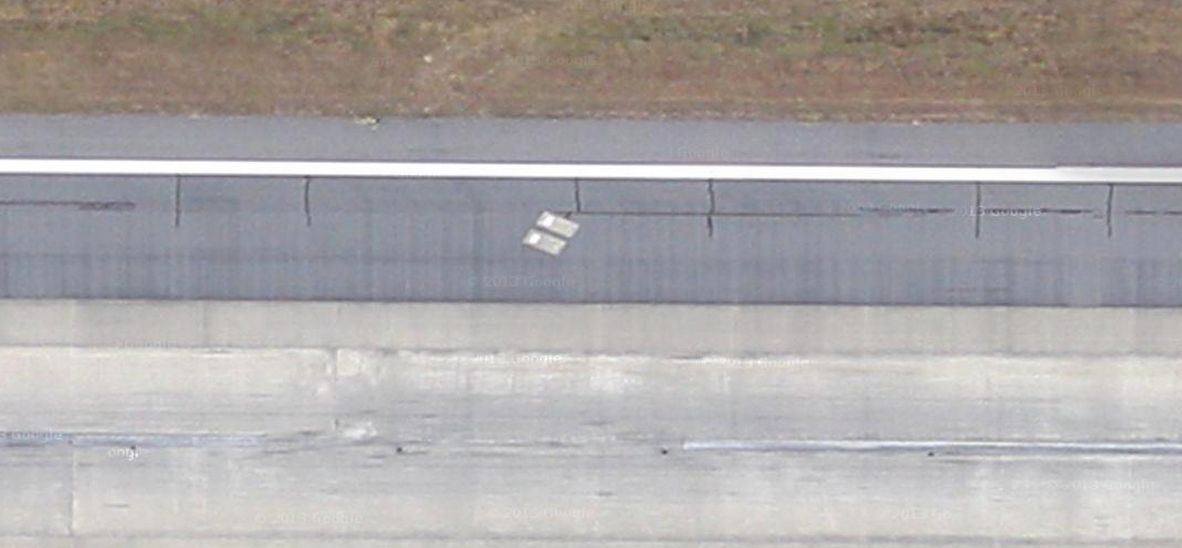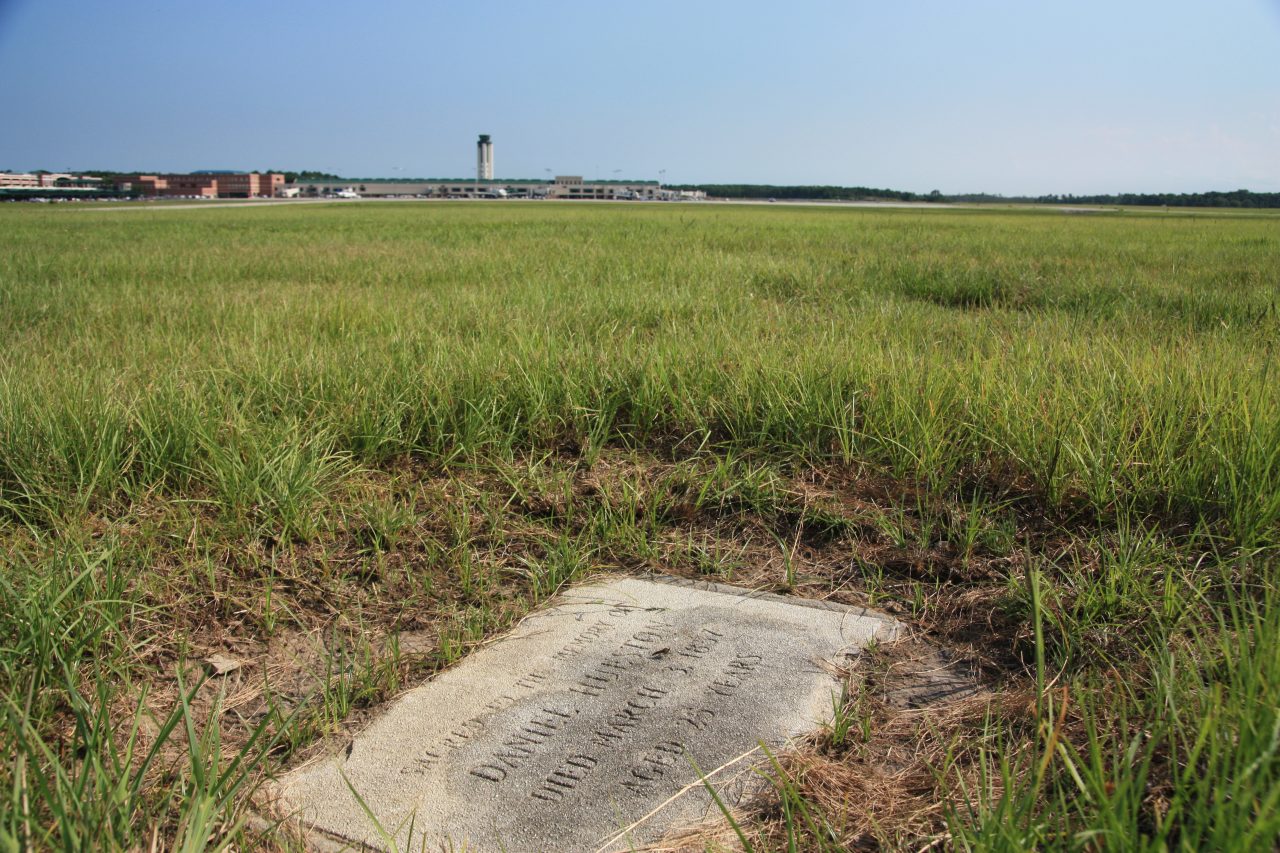Savannah/Hilton Head International Airport in Georgia has a unique feature that sets it apart from other airports worldwide—two graves embedded directly in the middle of an active runway. Passengers flying in and out of Savannah might not notice them, but beneath runway 10 lie the resting places of Catherine and Richard Dotson, early residents of the land. This extraordinary story intertwines family legacy, historical significance, and a touch of Southern charm, revealing why these graves remain on airport grounds to this day.
The Dotson Family: Pioneers of the Land
Who Were Catherine and Richard Dotson?
Catherine and Richard Dotson, both born in 1779, were early settlers and hardworking farmers in Georgia. The land, known then as Cherokee Hills, was part of their family’s farm, which they managed through years of change, growth, and challenges. Married for over fifty years, the Dotsons worked the land, raised their family, and contributed to the local farming community.
When Catherine passed away in 1877, followed by Richard seven years later, the Dotson family honored their legacy by burying them on their land, alongside other family members and workers. By that time, their farm had a family cemetery with over 100 graves, including those of slaves and workers who had once toiled on the property. The graves of Catherine and Richard stood as a tribute to their hard work and love for the land.
How a Family Farm Became Savannah Airport
Transforming Farmland into an Airfield
In 1942, during World War II, the United States government and the City of Savannah sought to expand aviation facilities for military purposes. The Dotson descendants were approached by government officials to negotiate a lease for their land, which would be used to establish an airfield to support the U.S. War Department.
The government required a site for training and operating heavy bombers, including the B-24 “Liberator” and B-17 “Flying Fortress.” Savannah’s strategic location and open farmland made it an ideal choice for this expansion. The family agreed, with the understanding that most of the cemetery would be relocated. The site soon became Chatham Field, serving as a crucial base for the Army Air Corps during the war.
Moving Over 100 Graves—But Leaving Two Behind
Relocating the Dotson Family Cemetery
As the construction progressed, most of the graves in the Dotson family cemetery were moved to nearby Bonaventure Cemetery, preserving the family’s history while making way for the new airfield. However, the Dotson family made a special request regarding the graves of Catherine and Richard. They insisted that the family patriarch and matriarch remain on the land they had worked for most of their lives.
Thus, the two graves were left in place, directly on what would become runway 10. To mark their location, flat headstones were embedded into the tarmac, bearing the names and dates of Richard and Catherine Dotson. According to airport officials, these are the only known graves in the world situated on an active commercial runway, making them a unique piece of aviation history.
Additional Graves Left Near the Runway
The Resting Places of John Dotson and Daniel Hueston

Along with Catherine and Richard’s graves, two other family graves remained nearby, though not directly under the runway. John Dotson and Daniel Hueston, relatives of the Dotsons, were also left on the property. Their graves are nestled within a small patch of greenery, not far from the runway’s edge, and are similarly preserved as part of the family’s wishes. This decision underscores the family’s desire to honor their ancestors and their connection to the land, even as it evolved into an airfield.
A Part of the “Airport Family”
Honoring the Dotsons’ Legacy
Today, the Savannah/Hilton Head International Airport treats the Dotson graves as part of its legacy. Airport staff and officials have embraced the presence of these graves, referring to Catherine and Richard as “members of the airport family.” Pilots, crew, and regular passengers are often aware of the graves and their significance. Some have even heard ghost stories surrounding the runway, adding a layer of intrigue to every landing and takeoff on runway 10.
Shannon Scott, a historian of Savannah’s Bonaventure Cemetery, notes that the graves are symbolic of Savannah itself. “To me, that is sort of the quintessential Savannah: A city built on top of its own dead,” he explained, referring to the rich and sometimes eerie history of the area. The Dotsons’ graves serve as a reminder of Savannah’s past, blending history with modern infrastructure in a way that feels uniquely Southern.
Savannah: One of America’s Most Haunted Cities
A City of Ghosts and Legends

Savannah’s haunted reputation stretches far beyond the graves at the airport. Often listed alongside Salem, Massachusetts, and New Orleans, Louisiana, Savannah is considered one of America’s most haunted cities. From ghostly apparitions to haunted buildings, the city is a haven for paranormal enthusiasts and history buffs alike. The Dotson graves add to the mystique, especially as some visitors report eerie feelings when their planes touch down on runway 10.
Other haunted sites in Savannah include those associated with the Civil War, the Yellow Fever epidemic, and the countless tragedies that befell enslaved people in the region. Tales of restless spirits seeking justice or closure are woven into the fabric of the city’s history. For many, these stories start the moment they land at the airport, greeted by the resting places of Catherine and Richard Dotson.
How the Dotson Graves Reflect Savannah’s Unique Culture
Embracing a Legacy of History and Mystery

The decision to leave the Dotson graves on airport property highlights Savannah’s reverence for its past. This city has a deep connection to its history, and the unusual placement of these graves speaks to that tradition. Savannah embraces its ghost stories and legends, blending history with folklore in a way that attracts tourists from around the world. The graves at Savannah Airport represent the intersection of history, family, and modernity—a fitting symbol for a city where the past is never truly buried.
Conclusion: A Unique Legacy That Lives On
Catherine and Richard Dotson’s graves at Savannah/Hilton Head International Airport serve as more than just a curiosity—they are a testament to family loyalty and respect for the past. Their resting places remind us that history and progress can coexist, even in unexpected places like an airport runway. For those who pass over their graves, knowingly or not, they offer a glimpse into the legacy of Savannah and the stories that shape its character.
As Savannah continues to be one of America’s most haunted and historically rich cities, the Dotson graves will remain a unique part of its landscape. Next time you find yourself flying into or out of Savannah, take a moment to think of the Dotsons and the land they loved. Their story is a remarkable reminder that even in the midst of modern progress, the memories of those who came before us remain beneath our feet.


